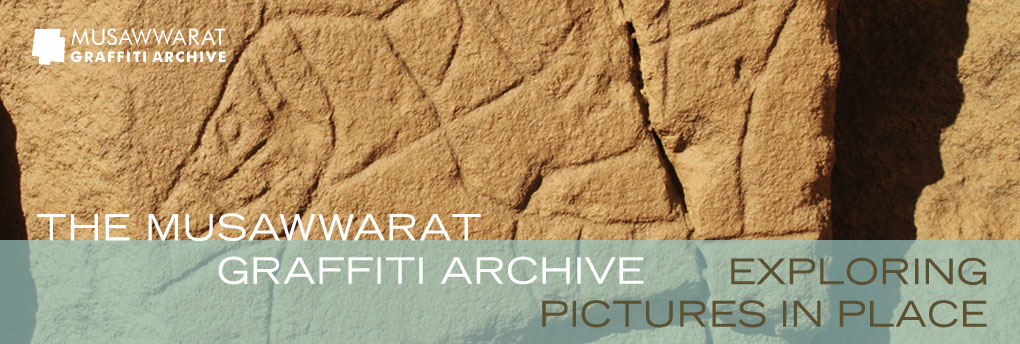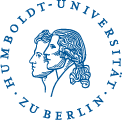The Graffiti Corpus of Musawwarat
Among the graffiti of Musawwarat zoomorphic and anthropomorphic motifs are prominent. The former include depictions of lions, elephants, giraffes, baboons, cattle, horses and dogs, to mention but a few. Some animals are equipped with attributes that identify them as belonging to the religious sphere of the Meroitic state, such as a winged lion with a hemhem crown as a personification of Apedemak. Anthropomorphs, most of them male figures, have been interpreted as representing enemies of the Meroitic realm, members of the (royal) elite and of special occupational groups, including priests, on the basis of various attributes, including headgear, coiffure, facial hair and markings, jewellery, clothing, gesture and apparent activity.
Depictions of gods and mythical hybrid beings, of cult-related objects as well as of ‘symbols’, such as the winged sundisk, relate many of the graffiti to the (magico-)religious sphere of the Meroitic state. Many of these pictorial graffiti show similarities in form characteristics and/or image content with Meroitic period iconography known from other, well-dated contexts. Some of the motifs of the Meroitic period exhibit a great variation in manner of depiction, which may range from life-like to ‘geometric’. Giraffes are one of the motifs that are rendered with very different amounts and types of visual information. The variability in the motif spectrum and in form conventions raises questions regarding the authors of the graffiti and graffiti-making contexts, and not least as to the function(s) of the Great Enclosure.
After the Great Enclosure lost its primary function(s), at the latest with the collapse of the Meroitic state, the monument was still utilised and graffiti were added. Most prominent among these are the graffiti of the Christian Medieval period (c. AD 500-1500), which include depictions of crosses and camels as well as name graffiti and monograms using Greek script and, among others, referring to the archangel Michael. Camels, together with a multitude of geometric motifs, are also characteristic of the following post-Medieval Islamic period. The most recent graffiti date to the past 200 years, a time during which the Nile Valley has been explored scientifically and touristically.
Text: Cornelia Kleinitz (2014)







